Although they are only molluscs, octopuses display an unimaginable level of intelligence and have the ability to change their color and structure like a flexible chameleon. When it comes to the best-looking octopus species, each has its own unique characteristics, but among the many species, there are a few that are particularly impressive.
The top ten most beautiful octopuses in the world include blue-ringed octopus, Dumbo octopus, mimic octopus, piggy octopus, blue-striped octopus, pancake octopus, coconut octopus, etc. I hope that through this introduction, everyone can have a deeper understanding of these most beautiful octopus species in the world and appreciate their unique charm and beauty.
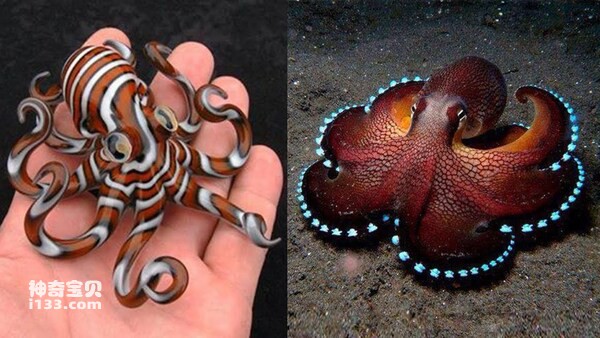
1. Blue-ringed octopus
As one of the most beautiful octopuses, the blue-ringed octopus is also one of the most venomous octopuses. Their skin contains special pigment cells that are rich in blue pigment. When a large number of these pigment cells form a circle, beautiful blue rings are formed. This attractive coat is a warning sign.
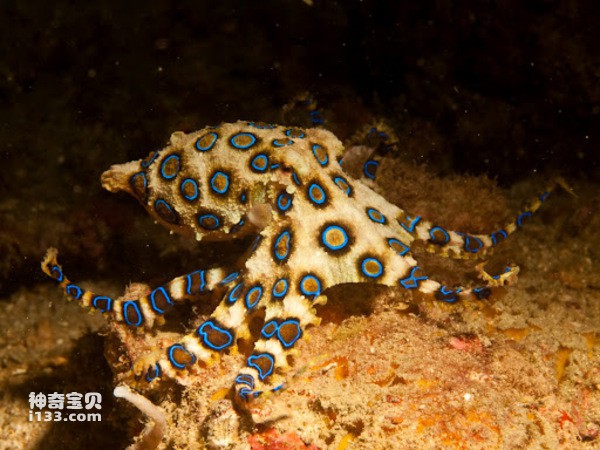
Although blue-ringed octopuses are usually mild-tempered and will not actively attack non-threatening creatures, their venom should not be underestimated. Once bitten by a blue-ringed octopus, its venom contains the chilling "angel's kiss", which is almost certain to cause adverse consequences. Therefore, when interacting with blue-ringed octopus, you should avoid using rough methods to catch it to avoid accidents.
2. Semi-deep sea soot octopus
The semi-deep-sea soot octopus, also known as the Dumbo octopus, is recognized as one of the cutest octopuses in the world, and its appearance is extremely cute and cute. These little guys are named because their fins resemble the Disney cartoon character "Dumbo" when they swim. They are only about 20 centimeters in length, have smooth skin, a semi-gelatinous body that shrinks front and back, and have tiny ears and A long "nose".
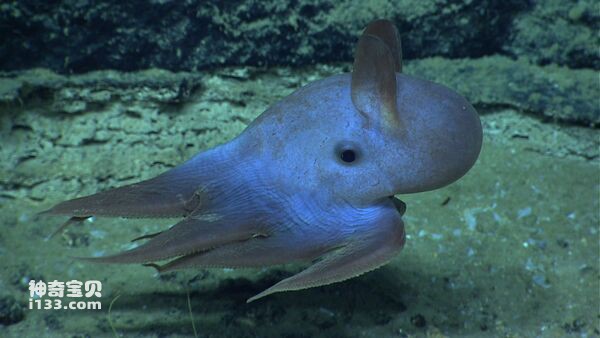
This octopus is a very fragile species and is likely to die once it leaves its marine environment. Due to its living habits, the semi-deep sea soot octopus is not suitable for artificial breeding, which resulted in it being included in the IUCN Red List of Endangered Species in 2014.
3. Mimic octopus
Known as the top camouflage master in nature, the mimic octopus is one of the ten most beautiful octopuses. The mimic octopus has eight tentacles like other octopuses, but is unique in its ability to change color and shape at will. Typically, mimic octopuses are speckled brown in color, but they have the ability to simulate a variety of environments and other marine life.
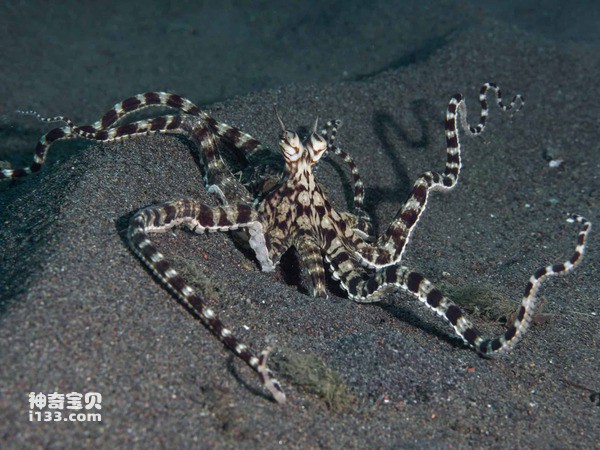
The mimic octopus has thousands of color pockets on its body, called "color pockets," which are controlled by a complex muscle network. These color packets contain pigments, and the mimic octopuses use color to display a variety of shades. By relaxing or contracting its color bags, the mimic octopus can align itself with any background color and pattern in less than a second, achieving perfect camouflage, making it a "master pretender" on the seafloor.
4. Banded piglet squid
The banded piglet squid, also known as the piglet octopus, is one of the cutest octopuses and is often mentioned in inventory. This kind of octopus is a deep-sea octopus. The adult body length is about 10 centimeters and has curled tentacles. Its body is transparent or translucent, and its shape resembles a piglet.
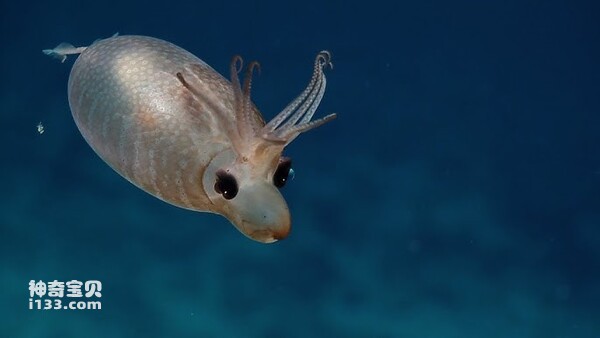
The banded piglet squid has light-emitting organs on its body that can glow in the dark ocean. It has a small and chubby body, a siphon similar to a pig's nose on its face, tentacles growing on its head, and a pair of large black eyes. With eyes that make it look like both a pig and a deer, it is one of the most fascinating little octopuses in the world.
5. Spotted leopard octopus
The spotted leopard octopus and the blue-ringed octopus belong to the same genus, the leopard octopus, and are one of the most beautiful species of octopuses in the world that have attracted much attention. They are usually about 20 centimeters long and come in a variety of colors, including gray, beige, dark brown, dark yellow to brown, etc. When in danger, special pigment cells in their bodies are activated, and up to 60 iridescent blue spots and rings appear on their bodies and tentacles.
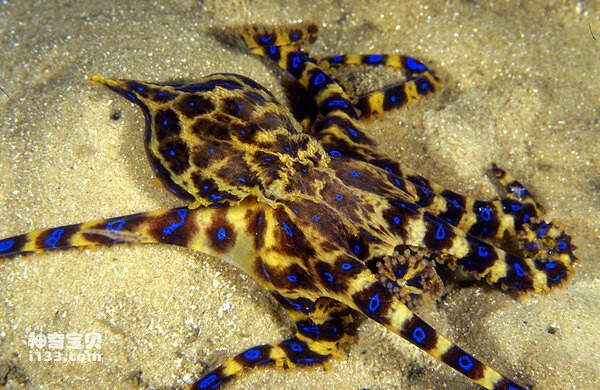
These green-blue glowing spots and blue rings are both warning colors and highly toxic. There have been cases in Australia of people being poisoned and dying from its bites, and in Japan there have been cases of food poisoning after eating it. Therefore, be careful when interacting with this type of octopus to avoid tragedy.
6. California octopus
Each species of octopus has its own unique characteristics, and the California octopus is also a popular species, often referred to as the flapjack octopus. As one of the rare species in the family Asteridae, they inhabit the deep seabed and feed on small aquatic organisms. The overall length of the pancake octopus is about 19 centimeters, with a slightly bag-shaped head and two small ears. The body is a striking orange-red color, which is extremely gorgeous.
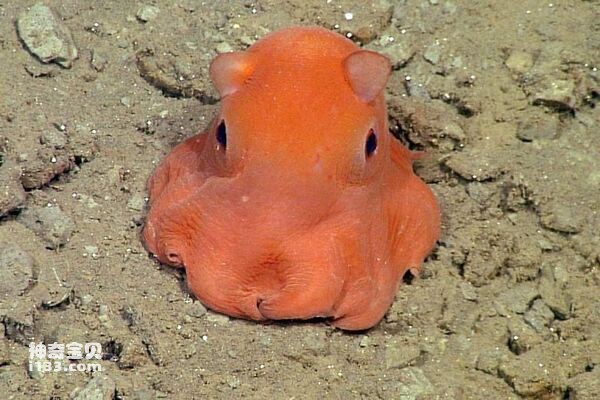
This kind of octopus usually adopts the strategy of immobilizing the enemy and immobilizing itself. Once the prey approaches, it will quickly use its tentacles to capture the prey. But when the pancake octopuses are resting quietly, if there is a big movement nearby, they will quickly cover their faces with their tentacles, like a small orange-red ball, showing interesting behavior.
7. Striped octopus
The coconut octopus, commonly known as the striped octopus, is one of the most fascinating octopuses in my opinion. This particular creature stands out for its uniqueness and being one of the few octopuses that can walk on two legs. Striped octopus mainly inhabits deep water and usually only survives in places such as the tropical Pacific. Its name comes from its ability to use coconut shells as shelter, displaying a highly creative behavior.
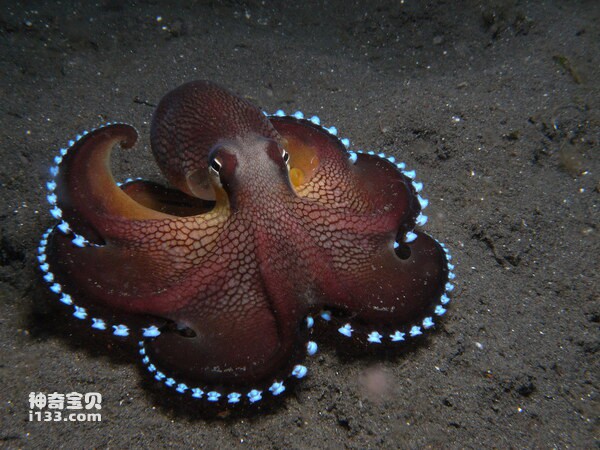
The length of this amazing little creature is about 7 centimeters, and its arms and legs can be up to 20 centimeters long. Its body shows a very colorful vein-like pattern, and its long black arms are covered with multiple white suckers. These white suckers are like a string of bright lights on its dark body, dotted with its arms and legs.
8. Blanket Octopus
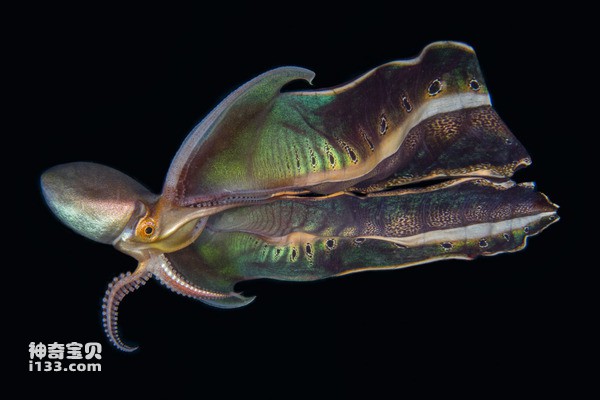
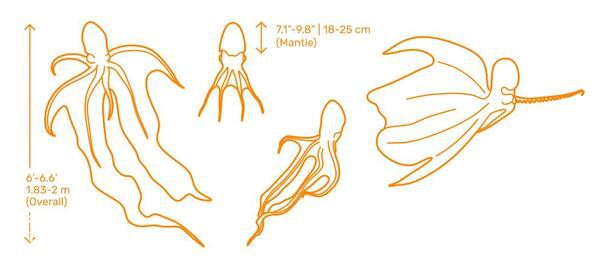
The blanket octopus is known as one of the most bizarre octopus species in the world. The male octopus is about 3 centimeters long, while the female octopus can stretch to 1.8 to 2 meters in a short time after mating. The male octopus will be sacrificed in the process. Female octopuses live longer but die soon after giving birth and have a relatively short body part between the legs. When blanket octopuses are in danger, they extend their arms and legs to look like a giant blanket unfolding.
9. Xiahong octopus
Xiahong octopus, also known as red octopus or starry sky soft octopus, is an extremely beautiful octopus. They usually have an oval body with tapered ends and well-developed muscles. The back of the coat is covered with fine folds and protrusions of various sizes; the body is brownish-red, with a darker back, and the back of the coat, head, wrists and between the wrists The membrane is covered with irregular white spots.
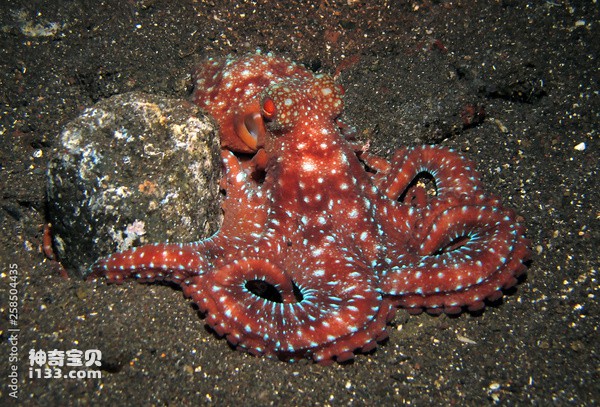
In spring, people are more likely to see red octopuses in seafood markets in southern coastal areas. Due to its bright body color, some merchants sell it as an ornamental fish, attracting people's attention under the trade name Xiahong Octopus. Red octopus is not very tolerant to low temperatures, and the most suitable water temperature range is between 20 and 25 degrees Celsius. Therefore, maintaining appropriate salinity in a normal seawater aquarium can ensure a good living environment for it.
10. Two-spotted octopus
The two-spotted octopus is widely distributed and lives in the East my country Sea, South China Sea, Malay Islands, Hawaiian Islands, California, San Salvador, Costa Rica, Sri Lanka, India and other waters. They mainly live in the subtidal zone and also move in the intertidal zone. They show full utilization of shelters and like to choose caves, rocks or rock crevices as shelters.
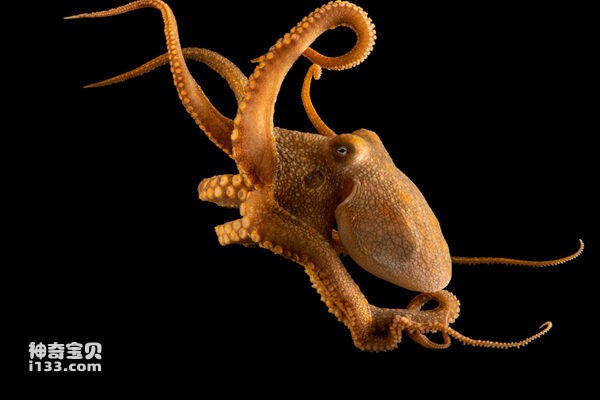
Generally speaking, the body of the two-spotted octopus is oval, with a smooth body surface and occasionally some irregular protrusions and reticular stripes. In front of each eye, there is a large black round spot between the second and third pairs of wrists, and the outside of this spot has some irregular black colors, adding to their unique appearance.
animal tags: octopus
We created this article in conjunction with AI technology, then made sure it was fact-checked and edited by a Animals Top editor.